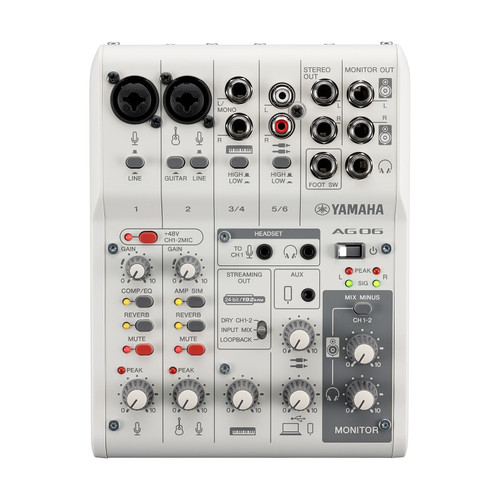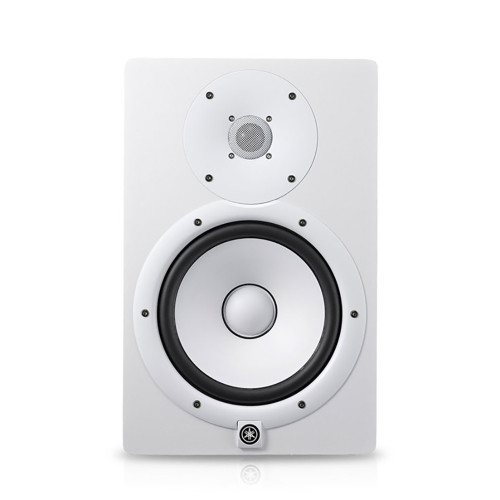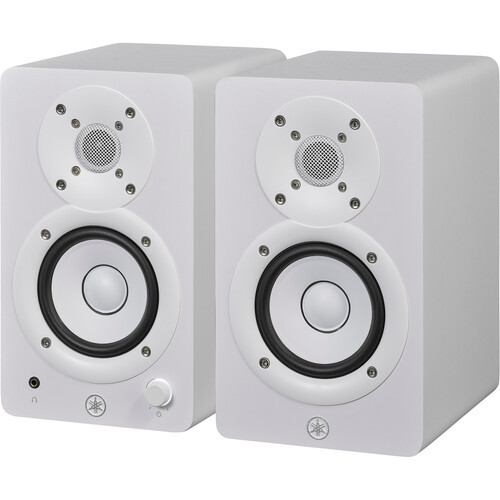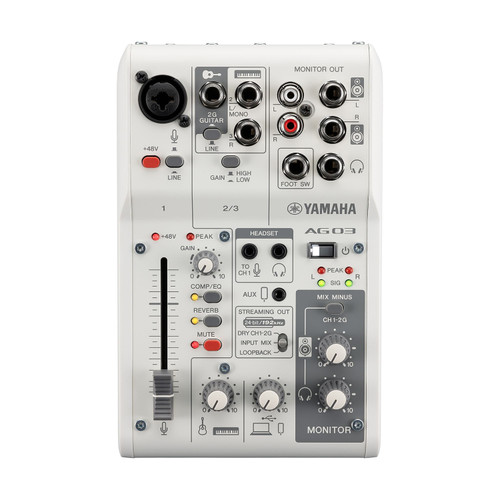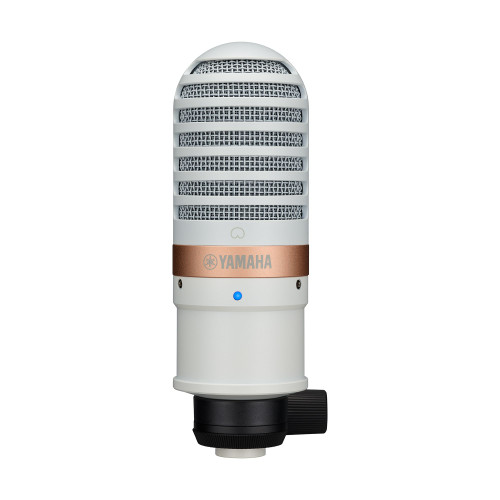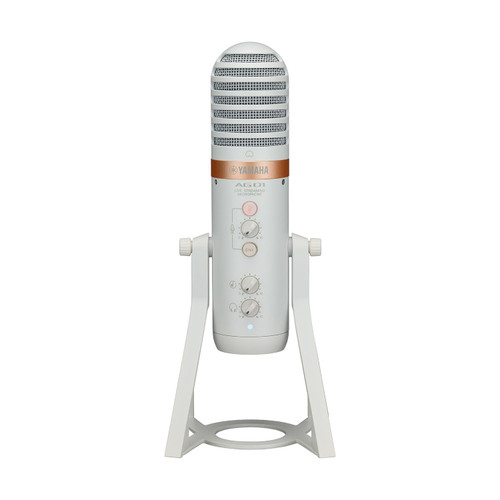Overview:
The HS4 sports a 1" dome tweeter and a 4.5" cone woofer fed by a 26W amplifier. The rear panel features 3-way room correction trim switches for boosting low frequencies and attenuating or boosting high frequencies, letting you quickly tune your speakers for your unique acoustic environment, while volume control is available on the front panel. XLR-1/4" combo, stereo 3.5mm, and stereo RCA inputs provide balanced and unbalanced connection options, while a dedicated front-panel 3.5mm headphone output lets you quickly switch between monitors and headphones for mixing reference or in-room recording. The HS4 studio monitors include a speaker cable, a stereo 3.5mm to RCA cable, and eight antislip pads.
About the HS Series
Ever since the 1970s, the iconic white woofer and signature sound of Yamaha's nearfield reference monitors have become a genuine industry standard for a reason—their accuracy. Unlike studio monitors with added bass or treble frequencies, which may sound more flattering at first, HS Series speakers were designed to give you the most honest, precise reference possible, providing an ideal sonic platform to build on throughout the mixing process.
By combining acquired knowledge and expertise with state-of-the-art sound technologies, Yamaha's speaker engineering team have examined, then optimized, every aspect that has contributed to making these monitors the most trusted in the business.
Ever since the 1970s, the iconic white woofer and signature sound of Yamaha's nearfield reference monitors have become a genuine industry standard for a reason—their accuracy. Unlike studio monitors with added bass or treble frequencies, which may sound more flattering at first, HS Series speakers were designed to give you the most honest, precise reference possible, providing an ideal sonic platform to build on throughout the mixing process.
By combining acquired knowledge and expertise with state-of-the-art sound technologies, Yamaha's speaker engineering team have examined, then optimized, every aspect that has contributed to making these monitors the most trusted in the business.
True to the Original
The HS4 continues the design philosophy and know-how of previous Yamaha studio monitors. No effort has been spared in the pursuit of the optimal product, and the resulting speakers are comprised of carefully selected parts such as a high-performance Class-D amp, highly resilient MDF cabinets, and woofers and soft dome tweeters that deliver a sound that is faithful to the source despite their small size.
They also feature proprietary Twisted Flare Port technology that reduces air turbulence noise in the bass reflex port, providing clear and accurate bass. That’s the secret to why the HS4 delivers outstanding resolution, sound image, and depth, with a flat response across all bandwidths without any coloring of the original sound.
The HS4 continues the design philosophy and know-how of previous Yamaha studio monitors. No effort has been spared in the pursuit of the optimal product, and the resulting speakers are comprised of carefully selected parts such as a high-performance Class-D amp, highly resilient MDF cabinets, and woofers and soft dome tweeters that deliver a sound that is faithful to the source despite their small size.
They also feature proprietary Twisted Flare Port technology that reduces air turbulence noise in the bass reflex port, providing clear and accurate bass. That’s the secret to why the HS4 delivers outstanding resolution, sound image, and depth, with a flat response across all bandwidths without any coloring of the original sound.
I/O and Controls to Fit Any Use Case
The rear panel of the HS4 is equipped with combination XLR-1/4" TRS, RCA, and 3.5mm jacks, allowing you to connect to a wide range of professional and consumer equipment such as computers, audio interfaces, audio mixers, and electric instruments. The most commonly used features—power button, volume knob, and headphone jack—are located in the front for easy access.
The rear panel of the HS4 is equipped with combination XLR-1/4" TRS, RCA, and 3.5mm jacks, allowing you to connect to a wide range of professional and consumer equipment such as computers, audio interfaces, audio mixers, and electric instruments. The most commonly used features—power button, volume knob, and headphone jack—are located in the front for easy access.










